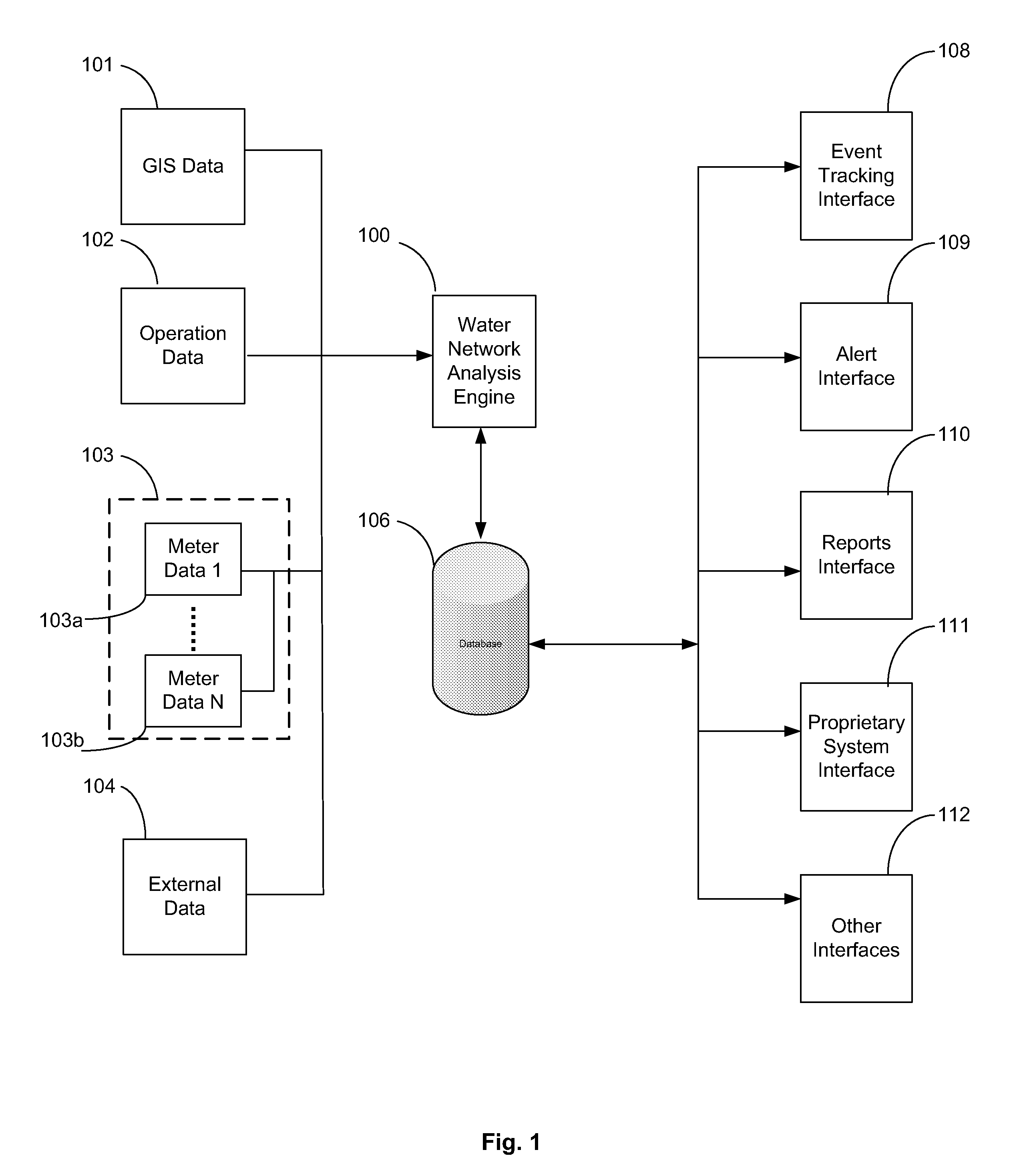System and method for monitoring resources in a water utility network
a water utility network and resource technology, applied in the direction of instruments, fluid loss/gain rate measurement, fluid tightness measurement, etc., to achieve the effect of increasing consumption and being easy to d
- Summary
- Abstract
- Description
- Claims
- Application Information
AI Technical Summary
Benefits of technology
Problems solved by technology
Method used
Image
Examples
Embodiment Construction
[0030]In the following description, reference is made to the accompanying drawings that form a part hereof, and in which is shown by way of illustration of specific embodiments in which the invention may be practiced. It is to be understood that other embodiments may be utilized and structural changes may be made without departing from the scope of the present invention.
[0031]FIG. 1 presents a block diagram illustrating one embodiment of a system for monitoring resources in a water distribution system. As shown in FIG. 1, the system includes a Water Network Analysis Engine 100 composed of various software modules and databases residing on computer hardware and performing the functions described further below. The engine 100 may include one or more processing devices performing the below-described operations in response to executable instructions. The Water Network Analysis Engine 100 analyzes data received from different meters, sensors, reading devices, or other data pertaining to ...
PUM
 Login to View More
Login to View More Abstract
Description
Claims
Application Information
 Login to View More
Login to View More - R&D
- Intellectual Property
- Life Sciences
- Materials
- Tech Scout
- Unparalleled Data Quality
- Higher Quality Content
- 60% Fewer Hallucinations
Browse by: Latest US Patents, China's latest patents, Technical Efficacy Thesaurus, Application Domain, Technology Topic, Popular Technical Reports.
© 2025 PatSnap. All rights reserved.Legal|Privacy policy|Modern Slavery Act Transparency Statement|Sitemap|About US| Contact US: help@patsnap.com



